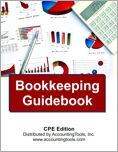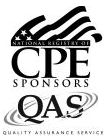Bookkeeping Guidebook (CPE Course)
CPE Credit: 15 hours
Course Type: Downloaded PDF materials with online test
Price (with PDF Textbook): $100
Course Description
A startup business or small company may have no formal accounting system in place, which leads to endless difficulties with record keeping and producing reliable financial statements. The Bookkeeping Guidebook course eliminates these problems by showing how to set up and operate a double entry accounting system, create journal entries, and record information in a general ledger. With this framework in place, the course also discusses how to issue billings, process cash receipts, calculate depreciation, value inventory, pay employees and suppliers, file tax returns, and produce financial statements. In short, this is the desk reference needed by anyone who wants to create or operate an accounting system.
Author: Steven Bragg
Course Number: AC1076
Table of Contents
Part I - Bookkeeping Essentials
Chapter 1. The Bookkeeper Position
Chapter 2. Bookkeeping Basics
Chapter 3. The Chart of Accounts
Chapter 4. The Ledger Concept
Chapter 5. Closing the Books
Chapter 6. The Financial Statements
Chapter 7. Interpretation of Financial Statements
Chapter 8. Bookkeeping Controls
Part II - Bookkeeping Operations
Chapter 9. Sales and Collection Activities
Chapter 10. Cash Processing
Chapter 11. Payables Processing
Chapter 12. Inventory Accounting
Chapter 13. Fixed Assets and Depreciation
Chapter 14. Debt Accounting
Chapter 15. Payroll Activities
Chapter 16. Payroll Taxes
Chapter 17. Income Tax Filings
Learning Objectives
Cite the responsibilities of the bookkeeper.
Recognize the underlying principles of accounting, and the nature of the accounting cycle.
Identify the situations in which different chart of account structures should be used, and the issues relating to the reduction of the chart of accounts.
Specify the types of subsidiary ledgers, and the uses to which the trial balance can be put.
Recognize the steps involved in closing the books and reviewing the financial statements.
Identify the different formats in which the financial statements can be presented, and the accounts used in each of the statements.
Identify ratios that can be used to interpret the information in the financial statements.
Cite the controls used in the processing of billings, cash receipts, payables, expense reports, petty cash, and payroll.
Specify the documents used in the processing of credit requests, billings, and communications with customers.
State the responsibilities of the parties involved in cash processing, and the causes of errors in that processing.
Identify the situations in which procurement card billings can be called into question, and the types of reimbursements allowed on an expense report.
Cite the reimbursement rules related to expense reports.
Describe the elements of a petty cash system.
Recognize the types of inventory tracking systems, and the methods available for estimating the cost of ending inventory.
Cite the key concepts relating to the calculation of depreciation, as well as the methods of depreciation.
Describe the depreciation rules related to land.
Identify the causes of a loan balance difference in the records of the borrower and lender.
Recognize the government forms associated with payroll activities.
Specify the methods for calculating gross pay and determining income tax withholdings.
Recognize the accounting for payroll transactions.
Recognize the timing of payroll tax deposits, and the penalties applicable to late payments.
Describe how the FUTA tax is calculated.
Cite the forms used by the different types of businesses to report their income tax liabilities.
Describe the loss recognition by partners in a partnership.
Level: Overview
Instructional Method: QAS Self-Study
NASBA Category: Accounting
Prerequisites: None
Advance Preparation: None
Latest Review Date: July 2024
Program Registration Requirements: Click on "Purchase Course" near the top of this page to pay for and access the course. You will then be able to download the course as a PDF file, then take an on-line examination, and then download a certificate of completion if you pass the examination.
Program Refund Policy: For more information regarding administrative policies concerning complaints, refunds, and other matters, see our policies page.
AccountingTools, Inc. is registered with the National Association of State Boards of Accountancy (NASBA) as a sponsor of continuing professional education on the National Registry of CPE Sponsors. State boards of accountancy have the final authority on the acceptance of individual courses for CPE credit. Complaints regarding registered sponsors may be submitted to the National Registry of CPE Sponsors through its website: www.nasbaregistry.org.
The NASBA sponsor identification number for Accountingtools, Inc. is 115881.
AccountingTools is an IRS Approved Continuing Education Provider. We are compliant with the requirements for continuing education providers (as described in sections 10.6 and 10.9 of the Department of Treasury’s Circular No. 230 and in other IRS guidance, forms, and instructions). Our IRS Approved Continuing Education Provider number is 72821.


